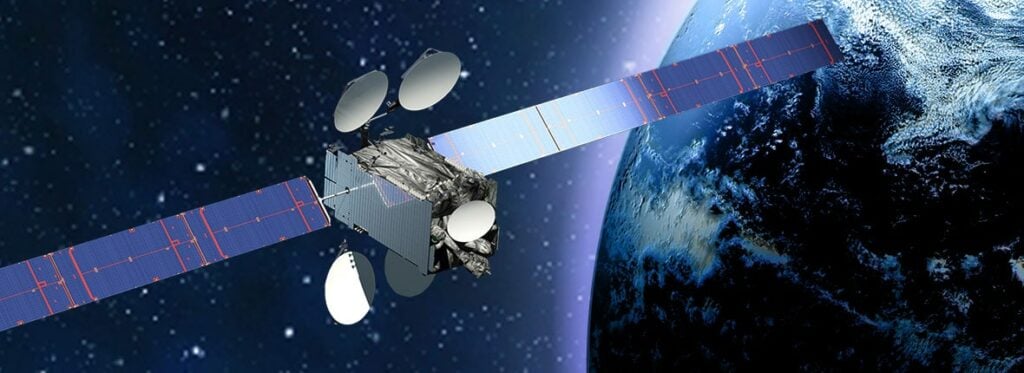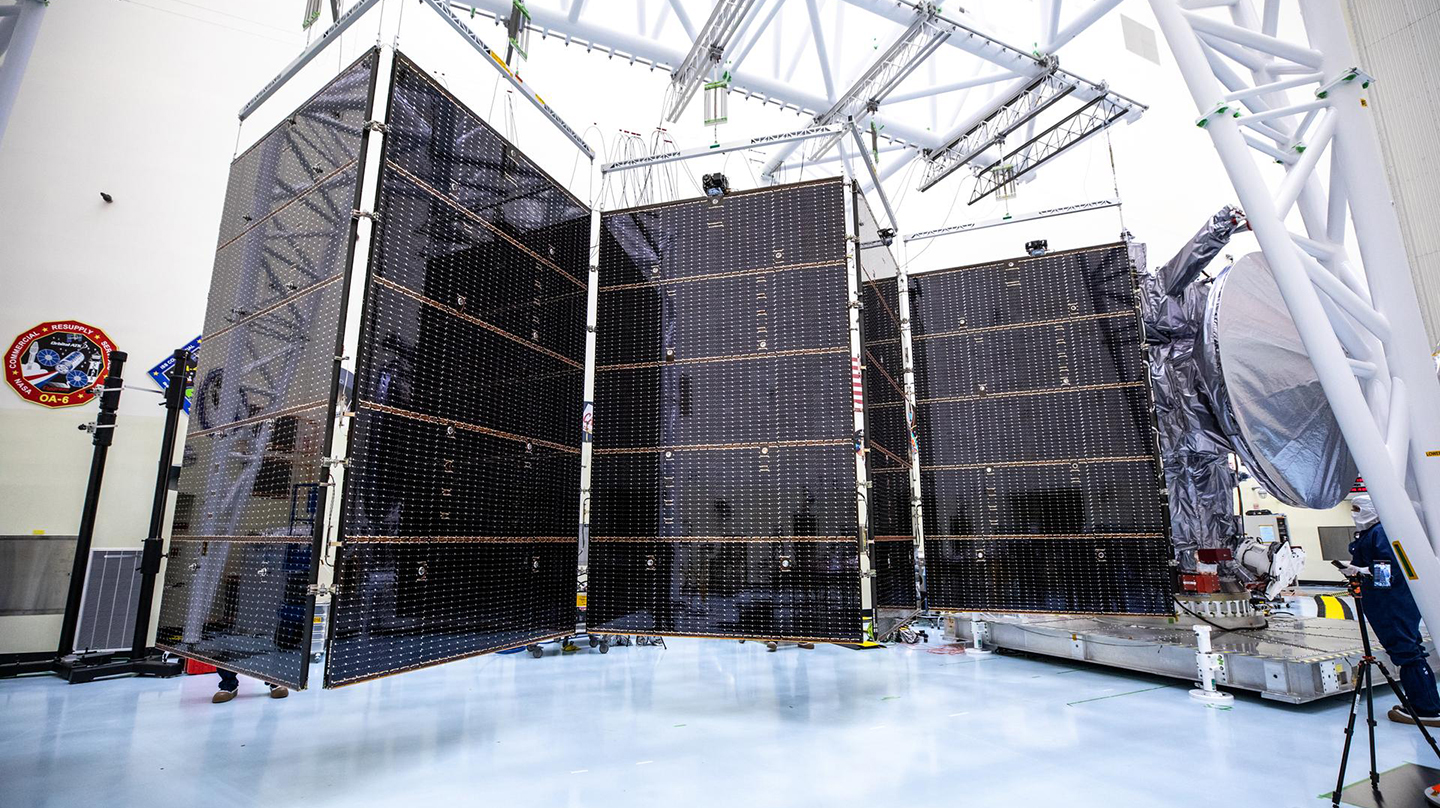In this edition:
* The Space Age, Morse Code and STEM Innovation
+ ASRTU-1 Designated ASRTU-OSCAR 123
* CubeSatSim Kits Available Once Again (Revised)
* New Chinese Satellite Completes Frequency Coordination
* Update on PARUS-T1A Satellite
* Air Leak on ISS Russian Module Is Getting Worse
* Changes to AMSAT-NA TLE Distribution
* Space Station Raises Orbit Avoiding Orbital Debris
* ARISS News
* Upcoming Satellite Operations
* AMSAT Ambassador Activities
* Satellite Shorts From All Over
The AMSAT News Service bulletins are a free, weekly news and information service of AMSAT, the Radio Amateur Satellite Corporation. ANS publishes news related to Amateur Radio in Space including reports on the activities of a worldwide group of Amateur Radio operators who share an active interest in designing, building, launching and communicating through analog and digital Amateur Radio satellites.
The news feed on http://www.amsat.org publishes news of Amateur Radio in Space as soon as our volunteers can post it.
Please send any amateur satellite news or reports to: ans-editor [at] amsat.org
You can sign up for free e-mail delivery of the AMSAT News Service Bulletins via the ANS List; to join this list see: https://mailman.amsat.org/postorius/lists/ans.amsat.org/
ANS-329 AMSAT News Service Weekly Bulletins
To: All RADIO AMATEURS
From: Radio Amateur Satellite Corporation
712 H Street NE, Suite 1653
Washington, DC 20002
DATE 2024 Nov 24
AMSAT OSCAR-7 50th Anniversary — The Space Age, Morse Code and STEM Innovation
At first glance, there is something about Morse Code and the space age that don’t go together. But, think about Morse in its simple beauty.
In addition to building a few spacecraft and pursuing a global amateur radio allocation for satellites at the International Telecommunications Union World Radio Conference, AMSAT was also busy developing an educational curriculum. Before STEM (Science, Technology, Engineering and Mathematics) was even a concept, AMSAT thought it would be quite exciting to allow grade-school to high-school students the opportunity to understand the basics of a spacecraft — not by reading about it in a book, rather by using a real spacecraft, in class.
 Artist rendering of AO-7
Artist rendering of AO-7
One of AMSAT’s members, Dr. Martin Davidoff, K2UBC, decided to write a curriculum at the secondary education level and received a grant from the Department of Energy to write it. The Satellite Experimenters Handbook was distributed by the American Radio Relay League (ARRL) and AMSAT to anyone who might want to teach others about spacecraft technology. The book especially targeted secondary school educators. Key among the concepts was the idea of giving a teacher, who may or may not be a radio amateur, the information necessary to assemble a receiving system, which could act as a student demonstration tool in school. This receiver and antenna would allow a class to “receive and decode” telemetry. This process, then, required the students to think through some orbital mechanics, the technology of antennas and receivers, and finally, the principles of demodulation and decoding.
This is where Morse came in. For just the numbers, 0-9, in Morse can be learned in 10 minutes by just about anyone. And, so it is a perfect tool for any eighth grader!
The Morse Code Telemetry Encoder System (TLM) was designed and fabricated by John Goode, W5CAY. This unit was built in one of the small modules that comprised the AO-7 spaceframe. This little box used fixed logic comprised of 34 IC’s and one op-amp for the A/D converter. Using CMOS components was amazingly efficient; it required 2 mA of current at 10V DC from the power bus – a whopping 20 mW!
This TLM encoder had 24 analog input channels that were organized in 4 columns and 6 rows. They were divided, basically, into current, voltage and temperature channels. All were scaled to a 1.0 V full- scale input to the A/D converter. The encoder produced decimal values and was organized into two Morse characters between 0 and 99. The first number of each word is a digit giving the row number of the datum. This reduces the ambiguity of where in the frame the encoder was; in case the student got a bit lost.
AMSAT’s commitment to STEM education continues today with its CubeSat Simulator program and its developing Youth Initiative – all fueled by a fifty-year-old satellite that is still in operation today.
Persons wanting to read more about the life and history of AMSAT OSCAR-7 are invited to visit https://www.amsat.org/amsat-ao-7-a-fifty-year-anniversary/.
[ANS thanks Frank Karnauskas, N1UW, AMSAT VP-Development, for the above information]
The 2024 AMSAT President’s Club coins are still available!
Help Support GOLF and Fox Plus

Join the AMSAT President’s Club today and help
Keep Amateur Radio in Space!
https://www.amsat.org/join-the-amsat-presidents-club/
ASRTU-1 Designated ASRTU-OSCAR 123
At the request of Harbin Institute of Technology and Amur State University, AMSAT has designated ASRTU-1 as ASRTU-OSCAR 123 (AO-123).
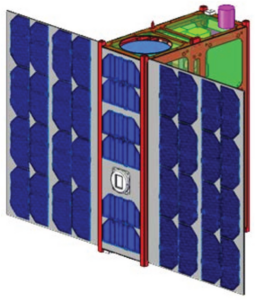
Illustration of AO-123 [Credit: nanosats.eu]
ASRTU-1 was launched on November 4, 2024 at 23:18 UTC, on a Soyuz launch vehicle from Vostochny Cosmodrome, Russia. Built and operated by Harbin Institute of Technology and Amur State University, the satellite carries a V/U repeater, UHF SSDV digital image transmitter, and a 10.5 GHz QPSK image transmitter. All of these payloads have been successfully tested, and the repeater has been operational for QSOs.
The satellite contains an FM transponder, which is currently operational, with an uplink of 145.850 MHz (67 Hz CTCSS tone required) and a downlink of 435.400 MHz. After the repeater detects the end of uplink, it will wait for 0.5s. If no new uplink in 0.5s, telemetry will be sent. So make fast QSOs so the telemetry is less like to interrupt you.
The satellite also contains two cameras with an SSDV downlink for low resolution images on 436.210 MHz, and a high speed downlink on 10.460 GHz for high resolution images.
Windows software for decoding telemetry is available at https://drive.google.com/file/d/1W8nm-P0_h0J1Bd1eif74mLo-EuRdWcjH
Two-Line Keplerian elements (TLEs) may be found at http://asrtu.mqsi.xyz/ASRTU_TLE.txt
AMSAT congratulates the Harbin Institute of Technology and Amur State University, thanks them for their contribution to the amateur satellite community, and wishes them continued success on this and future projects.
ANS thanks Drew Glasbrenner, KO4MA, OSCAR Number Administrator, for the above information.]
CubeSatSim Kits Available Once Again (Revised)
Another batch of CubeSatSim Kits will be available on the AMSAT Store on Monday, November 25 starting at noon U.S. Eastern time (1700 UTC). Due to an error, previous announcements had included an earlier date.
The $400 kits include everything you need to assemble a CubeSat Simulator with no soldering. Only about an hour and half of assembly is required to stack the boards, assemble the frame, and mount the solar panels.
The CubeSatSim Kit includes:
- Fully assembled and tested PCBs (Main, Solar, and Battery Boards)
- Raspberry Pi Zero 2 with a Pi Camera and fully programmed micro-SD card, along with a fully programmed Raspberry Pi Pico WH
- AMSAT logo Remove Before Flight tag switch
- 3D printed frame, nylon screws, and nuts, with a mini screwdriver included for assembly
- Metal standoffs, stacking headers, and JST jumpers for stacking the PCBs and Pi Zero 2
- 10 solar panels with pre-soldered JST connectors and mounting tape
- BME280 sensor (pressure, temperature, altitude, humidity) and MPU6050 IMU/gyro pre-soldered
- Two 6″ SMA coax cables and two SMA antennas
The kit also comes with an instruction sheet, parts inventory, and links to online instructions. Assembly time is estimated to be under two hours, with scissors and the provided mini screwdriver.
 Limited quantities of the CubeSatSim Kit will soon be available for purchase from the AMSAT Store. [Credit: Alan Johnston, KU2Y]
Limited quantities of the CubeSatSim Kit will soon be available for purchase from the AMSAT Store. [Credit: Alan Johnston, KU2Y]
The v2.0 CubeSatSim features improvements over v1.2, such as an FM transceiver, Raspberry Pi Pico microcontroller, and RF command and control using DTMF or APRS packets. It can also be modified to function as a 500mW high altitude balloon payload.
For those interested in creating their own CubeSatSim, v2.0 blank PCB sets are available at the AMSAT Store for $35. These require additional components, which can be purchased for approximately $300 using the provided Bill of Materials.
Additional resources include:
- Kit Instructions https://cubesatsim.org/kit
- Kit Videos https://cubesatsim.org/kit-videos
- Discussion Forum https://github.com/alanbjohnston/CubeSatSim/discussions
- Quick Start Guide https://cubesatsim.org/qsg
For more information or to borrow a loaner CubeSat Simulator, contact Alan Johnston, AMSAT VP Educational Relations, at ku2y [at] arrl.net.
How to Order
Kits will be sold exclusively on the AMSAT Store website, https://www.amsat.org/product/cubesatsim-kit/. Only U.S. shipping addresses are eligible; orders with non-U.S. addresses will be refunded and closed.
About CubeSatSim
CubeSatSim is a low-cost satellite emulator powered by solar panels and batteries. It transmits UHF radio telemetry and can be expanded with additional sensors and modules, making it ideal for educational and public demonstrations.
[ANS thanks Alan Johnston, KU2Y, AMSAT Vice President Educational Relations for the above information]
New Chinese Satellite Completes Frequency Coordination
The satellite frequency coordination committee of the International Amateur Radio Union (IARU) on November 15 completed approval of frequency requests from the Chinese Amateur Satellite Group (CAMSAT) for a new amateur satellite to be launched next year.
CAS-11, a 6U CubeSat will include:
- HF/UHF – H/U Mode Linear Transponder, with a bandwidth of 15kHz downlink centered at 435.505 MHz, EIRP 24 dBm
Uplink 21.320 MHz +/- 7.5 kHz. - VHF/UHF – V/U Mode Linear Transponder, with a bandwidth of 30kHz downlink centered at 435.540 MHz, EIRP 24 dBm.
Uplink 145.860 MHz +/- 15 kHz. - VHF/UHF – V/U Mode FM Transponder, downlink at 435.600 MHz, EIRP 24 dBm
Uplink at 145.925 MHz - VHF/UHF – V/U Mode digital store-and-forward Transponder, downlink at 435.700 MHz, EIRP 24 dBm
Uplink at 145.895 MHz - UHF – CW Telemetry Beacon and
- UHF telemetry beacon using AX.25 4.8k/9.6kbps GMSK at 435.570 MHz, EIRP 23 dBm.
The above transponders and beacon will work 24/7 when the satellite power supply is sufficient. Amateur radio enthusiasts around the world can use it for two-way radio relay communication, data storage and forwarding communication, and receive satellite CW beacons.
The CAS-11 satellite will also be equipped with a 2.4 GHz multi-mode amateur radio satellite beacon transmitter, which is designed and built by university students, high school students and primary school students from Beijing Donggaodi Science and Technology Museum and Beijing University of Posts and Telecommunications under the guidance of CAMSAT. This is an unprecedented satellite project in China. It has brought opportunities for learning and practicing amateur radio and amateur satellites to students of all grades from elementary school to university, and promoted the application of amateur radio in space. This 2.4 GHz experimental beacon transmitter can switch to transmit five different modes of radio signals, and it will work continuously when the satellite is fully powered.
This project aims to cultivate students’ knowledge, skills and interests in amateur radio satellites. All transmission modes operate at 2.4 GHz, and the working modes are converted by the on-board computer program and ground remote control commands. It can work in the following modes: CW Telemetry Beacon, FT8 Telemetry Beacon, PPM Telemetry Beacon, or USB/SSTV Robot36, PD120 1. This beacon will transmit at 2405.500 MHz, EIRP 27 dBm.
CAS-11 carries three cameras, and the photos it takes are stored in the flash memory on the satellite. The builders have designed a simple remote control system based on DTMF commands. Amateur radio enthusiasts around the world can send DTMF commands to download the photo catalog and all photos taken by all cameras.
Anticipating a launch in September, 2025 into a 536 km polar orbit from Haiyang Sea Launch Platform, Shandong, China.
[ANS thanks IARU and Alan Kung, BA1DU, of CAMSAT for the above information.]
Need new satellite antennas?
Purchase M2 LEO-Packs from the AMSAT Store.

When you purchase through AMSAT, a portion of the proceeds goes towards
Keeping Amateur Radio in Space.
https://amsat.org/product-category/hardware/
Update on PARUS-T1A Satellite
The satellite frequency coordination committee of the International Amateur Radio Union (IARU) on November 20 updated information regarding the approved frequency requests from the National Formosa University for satellite PARUS-T1A. The satellite is tentatively scheduled for launch in January.
PARUS-T1A, a 3U CubeSat, is designed to continue the successful legacy of the PARUS- T1 mission. This satellite will provide essential services to the global amateur radio community.
The Primary Mission is an FM Voice Cross-Band Repeater to facilitate real-time voice communication between amateur radio operators on 145.980 MHz (Uplink tone 67Hz) and 435.250 MHz (Downlink).
The satellite will also carry an APRS Digipeater to enable the transmission of real-time position and status information from APRS-equipped devices on 145.825 MHz.
A telemetry beacon downlink on 437.850 MHz has also been coordinated, with unencrypted telemetry packets accessible to the public through online dashboards like SatNOGS, promoting transparency and community collaboration.
Anticipating a SpaceX launch from Florida in January, 2025 into a 590 x 510 km 98 degree orbit.
[ANS thanks IARU and Randson Huang, BV2DQ, for the above information.]
Air Leak on ISS Russian Module Is Getting Worse
For the past five years, air has been escaping through a Russian section of the International Space Station (ISS) at an increasing rate. NASA and its Russian counterpart, Roscosmos, are still in disagreement over the root cause of the leak, as well as the severity of the consequences.
The leak was first discovered in 2019 in the vestibule (named PrK) that connects a docking port to the Russian Zvezda module, which Roscosmos had launched to low Earth orbit in July 2000. Earlier this year, NASA elevated the leak to the highest level of risk as the rate of air escaping from the module had doubled from one pound of air per day to a little over two pounds.
“While the Russian team continues to search for and seal the leaks, it does not believe catastrophic disintegration of the PrK is realistic,” Bob Cabana, a former NASA astronaut who now chairs the ISS Advisory Committee, said during a meeting on Wednesday, SpaceNews reported. “NASA has expressed concerns about the structural integrity of the PrK and the possibility of a catastrophic failure.”
“The Russians believe that continued operations are safe but they can’t prove to our satisfaction that they are, and the U.S. believes that it’s not safe but we can’t prove to the Russians’ satisfaction that that’s the case,” he added.
Russian teams believe the air leak was likely caused by high cyclic fatigue from micro vibrations, while teams at NASA think pressure and mechanical stress, residual stress, material properties of the module, and environmental exposure are all at play, according to SpaceNews.
 The ISS is set for retirement by 2030. [NASA photo]
The ISS is set for retirement by 2030. [NASA photo]
The air leak was addressed in a recent report by NASA’s Office of Inspector General (OIG), which highlighted its true severity and the risk it poses to the crew. The OIG report stated that the two space agencies can’t seem to agree on the point at which the leak should be considered unsustainable. NASA and Roscosmos met to discuss the ISS air leak, with NASA officials noting that Roscosmos “is confident they will be able to monitor and close the hatch to the Service Module prior to the leak rate reaching an untenable level,” according to the report.
“Although the teams continue to investigate the causal factors for the crack initiation and growth, the U.S. and Russian technical teams don’t have a common understanding of what the likely root cause is or the severity of the consequences of these leaks,” Cabana is quoted in SpaceNews as saying.
The rate of air leaking from the hole increased around a week before the February 14 launch of the Progress MS-26 cargo spacecraft, which docked to the aft end of Zvezda. The hatch that connects the module to the ISS remained open for five days as the crew offloaded the cargo from Progress MS-26 onto the space station, but was closed shut afterwards.
NASA and Roscosmos are currently monitoring the leak and preparing to close the hatch to the service module when access is not required in order to minimize the amount of air lost and isolate the leak itself from the rest of the space station. If required, the space agencies are prepared to permanently shut off the hatch should the leak rate became unmanageable. The ISS would function normally, but there would be one less docking port for spacecraft delivering cargo to the space station.
As the two space agencies continue to discuss the potential risk, the aging space station is inching closer to retirement within the next six years and its hardware may finally be giving in to the wear and tear of the harsh space environment.
[ANS thanks Gizmodo for the above information.]
Want to fly the colors on your own grid expedition?
Get your AMSAT car flag and other neat stuff from our Zazzle store!
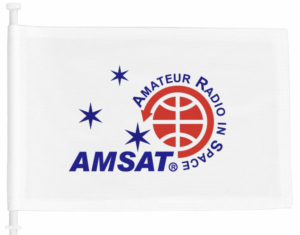
25% of the purchase price of each product goes towards
Keeping Amateur Radio in Space
https://www.zazzle.com/amsat_gear
Changes to AMSAT-NA TLE Distribution for Nov. 22
Two Line Elements or TLEs, often referred to as Keplerian elements or keps in the amateur community, are the inputs to the SGP4 standard mathematical model of spacecraft orbits used by most amateur tracking programs. Weekly updates are completely adequate for most amateur satellites. TLE bulletin files are updated daily in the first hour of the UTC day. New bulletin files will be posted immediately after reliable elements become available for new amateur satellites. More information may be found at https://www.amsat.org/keplerian-elements-resources/.
XW-2B NORAD Cat ID 40911 Decayed from orbit on 21 November 2024
[ANS thanks Joe Fitzgerald, KM1P, AMSAT Orbital Elements Manager for the above information]
Space Station Raises Orbit Avoiding Orbital Debris
The Progress 89 thrusters were fired at 20:09 UTC on Tuesday, November 19 for 5 minutes, 31 seconds, to raise the orbit of the International Space Station (ISS) to provide an extra margin of distance from a piece of orbital debris from a defunct defense meteorological satellite that broke up in 2015. The Pre-determined Debris Avoidance Maneuver (PDAM) was conducted in coordination with NASA, Roscosmos and the other space station partners.
Without the maneuver, ballistics officials estimated that the fragment could have come within around 2.5 miles of the station.
The maneuver had no impact on station operations and did not affect Thursday’s launch of the Progress 90 cargo craft from the Baikonur Cosmodrome in Kazakhstan.
[Operators attempting to utilize Amateur Radio aboard the ISS should make sure that the Keplerian orbital data in their tracking software has been updated since this change in orbit.]
[ANS thanks NASA for the above information]
ARISS NEWS
 Amateurs and others around the world may listen in on contacts between amateurs operating in schools and allowing students to interact with astronauts and cosmonauts aboard the International Space Station. The downlink frequency on which to listen is 145.800 MHz worldwide.
Amateurs and others around the world may listen in on contacts between amateurs operating in schools and allowing students to interact with astronauts and cosmonauts aboard the International Space Station. The downlink frequency on which to listen is 145.800 MHz worldwide.
RECENTLY COMPLETED:
Center for the Development of Children and Youth Creativity in the City of Pugachev, Saratov Region, Russia, direct via R4DS
The ISS callsign was RSØISS
The crewmember was Aleksey Ovchinin
The ARISS mentor was RV3DR
Contact was successful Wed 2024-11-20 15:16 UTC
Congratulations to the Center for the Development of Children and Youth Creativity students, Aleksey, mentor RV3DR, and ground station R4DS
Amur State University, Blagoveshchensk, Russia, direct via RКØJ
The ISS callsign was RSØISS
The scheduled crewmember was Alex Gorbunov
The ARISS mentor was RV3DR
Contact was successful Thu 2024-11-21 11:24 UTC
Congratulations to the Amur State University students, Alex, mentor RV3DR, and ground station RКØJ!
Escola Secundária Rafael Bordalo Pinheiro, Caldas da Rainha, Portugal, direct via CS5SS
The ISS callsign was OR4ISS
The scheduled crewmember was Don Pettit, KD5MDT
The ARISS mentor was IKØUSO
Contact was successful: Fri 2024-11-22 16:37:40 UTC 31 deg
Congratulations to the Escola Secundária Rafael Bordalo Pinheiro studnets, Don, mentor IKØUSO, and ground station CS5SS!
Watch for Livestream at https://www.youtube.com/live/QzZOq7bhOas
UPCOMING:
Colégio do Castanheiro, Ponta Delgada, Azores, direct via CQ8CDC
The ISS callsign is presently scheduled to be OR4ISS
The scheduled crewmember is Don Pettit, KD5MDT
The ARISS mentor is IKØUSO
Contact is go for: Tue 2024-11-26 14:57:32 UTC 74 deg
Watch for Livestream at https://www.youtube.com/live/ORRXzIPnjvg
Immanuel Kant Baltic Federal University, Kaliningrad, Russia, direct via TBD
The ISS callsign is presently scheduled to be RSØISS
The scheduled crewmember is Ivan Vagner
The ARISS mentor is RV3DR
Contact is go for: Thu 2024-11-28 15:05 UTC
Scuola Media “Giovanni Verga”, Caltanissetta, Italy, direct via IT9AOI
The ISS callsign is presently scheduled to be OR4ISS
The scheduled crewmember is Don Pettit, KD5MDT
The ARISS mentor is IKØWGF
Contact is go for: Fri 2024-11-29 11:01:30 UTC 59 deg
Watch for Livestream at https://meet.google.com/bdb-hoaf-iaf and also on https://www.youtube.com/@scuolamediafilippocordova
The crossband repeater continues to be ACTIVE (145.990 MHz up {PL 67} & 437.800 MHz down). If any crewmember is so inclined, all they have to do is pick up the microphone, raise the volume up, and talk on the crossband repeater. So give a listen, you just never know.
The packet system is also ACTIVE (145.825 MHz up & down). Ham TV (2395.00 MHz down) is currently STOWED.
As always, if there is an EVA, a docking, or an undocking; the ARISS radios are turned off as part of the safety protocol.
Note, all times are approximate. It is recommended that you do your own orbital prediction or start listening about 10 minutes before the listed time.
The latest information on the operation mode can be found at https://www.ariss.org/current-status-of-iss-stations.html
The latest list of frequencies in use can be found at https://www.ariss.org/contact-the-iss.html
[ANS thanks Charlie Sufana, AJ9N, one of the ARISS operation team mentors for the above information]
Upcoming Satellite Operations
A growing number of satellite rovers are currently engaged in sharing their grid square activations on https://hams.at. By visiting the website, you gain easy access to comprehensive information about the operators responsible for activating specific grid squares. Additionally, you have the ability to assess the match score between yourself and a particular rover for a given pass, while also being able to identify the upcoming satellite passes that are accessible from your location.
+ N4AKV/R plans to operate linear and FM satellites from EM71/EM72 on Nov. 25.
+ ADØHJ is planning his last 2024 rove to the Missouri Ozarks area between December 5th-8th. Mitch has never been to that area so he is looking to do some sightseeing and activate eight new satellite grid squares. EM26-EM28, EM36-EM39, and EN30. He will be working RS-44 passes in the evenings.
See https://hams.at for details.
[ANS thanks hams.at for the above information]
AMSAT Ambassador Activities
AMSAT Ambassadors provide presentations, demonstrate communicating through amateur satellites, and host information tables at club meetings, hamfests, conventions, maker faires, and other events.
February 14-15, 2025
Yuma HAMCON and Southwestern Division Convention
Yuma County Fairgrounds
Yuma, AZ
https://www.yumahamfest.com/
N1UW
[ANS thanks Bo Lowrey, W4FCL, Director – AMSAT Ambassador Program, for the above information]
Satellite Shorts From All Over
+ The space news website Space Daily carried a full article on Nov. 12 about the 50th anniversary of the launch of amateur radio satellite AO-7. As noted in anniversary articles by Frank Karnauskas, N1UW, AMSAT Vice President – Development, that have been published here in the AMSAT News Service bulletins [see above for this week’s installment], AO-7 is the world’s oldest active satellite. The Space Daily article, by reporter Clarence Oxford, incorporated a good share of Frank’s text from ANS issue #308 published on Nov. 3. (ANS thanks Space Daily for the above information.)
+ The Space Force wants its next fleet of GPS satellites to be smaller, cheaper and more resilient — and it’s looking to a mix of commercial and defense firms to help design those spacecraft. The program, expected to cost $1 billion over the next five years, comes amid growing concern from Pentagon and other government leaders about GPS vulnerability. The system, which guides weapons and helps military units navigate, has been a target for Russia in its war with Ukraine, using electronic warfare to jam signals on a regular basis. Users have also reported increased spoofing incidents, a method of manipulating GPS data to confuse a receiver about its location. A larger number of small satellites should make it harder for enemies to target the fleet and will ensure there’s a backup capability when they do, the Space Force says. (ANS thanks Defense News for the above information.)
+ Earlier this month, three tiny Australian satellites from Curtin University’s Binar Space Program burned up in Earth’s atmosphere. That was always going to happen. In fact, Binar means “fireball” in the Noongar language of the First Nations people of Perth. But these CubeSats, known as Binar-2, 3, and 4, entered the atmosphere much sooner than originally planned. They only lasted for two months – a third of what was expected. Recent high solar activity has been causing an unexpected headache for satellite operators in the last few years, and it’s only increasing. (ANS thanks Science Alert for the above information.)
+ China has taken another step toward its crewed lunar goals by successfully testing fairing separation for its Long March 10 moon rocket series. The fairing separation test was conducted recently, according to a Nov. 20 statement from the China Academy of Launch Vehicle Technology (CALT). The separation test is one of a number of milestones needed in order to get the Long March 10 ready for flight, with a first launch to low earth orbit currently targeted for 2026. China has committed to the goal of getting a pair of its astronauts onto the lunar surface by 2030. (ANS thanks Space News for the above information.]
Join AMSAT today at https://launch.amsat.org/
In addition to regular membership, AMSAT offers membership to:
* Societies (a recognized group, clubs or organization).
* Primary and secondary school students are eligible for membership at one-half the standard yearly rate.
* Post-secondary school students enrolled in at least half time status shall be eligible for the student rate for a maximum of 6 post-secondary years in this status.
* Memberships are available for annual and lifetime terms.
Contact info [at] amsat.org for additional membership information.
73 and remember to help Keep Amateur Radio in Space!
This week’s ANS Editor, Mark Johns, KØJM
mjohns [at] amsat.org


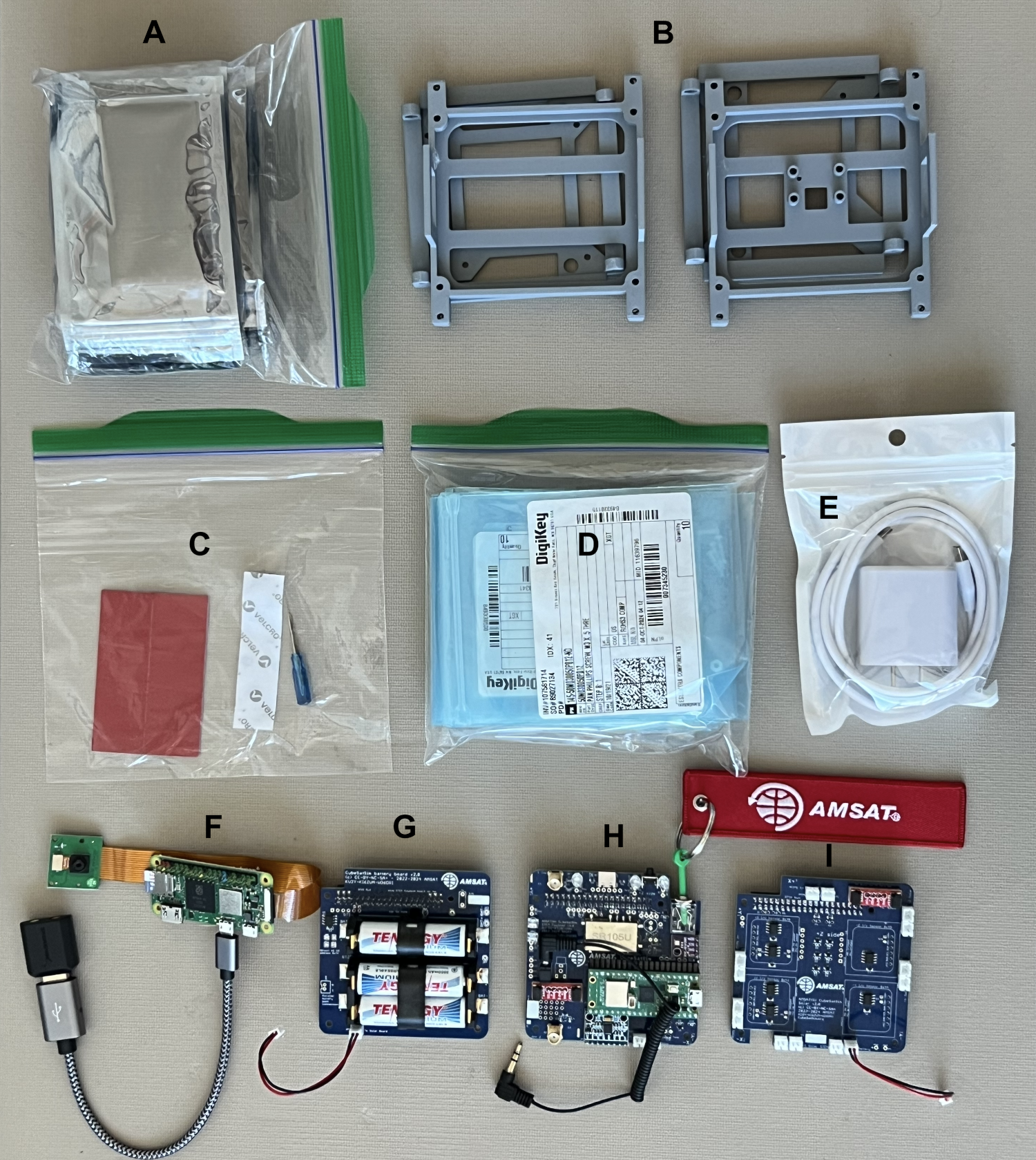
 Join the AMSAT President’s Club today and help
Join the AMSAT President’s Club today and help 







